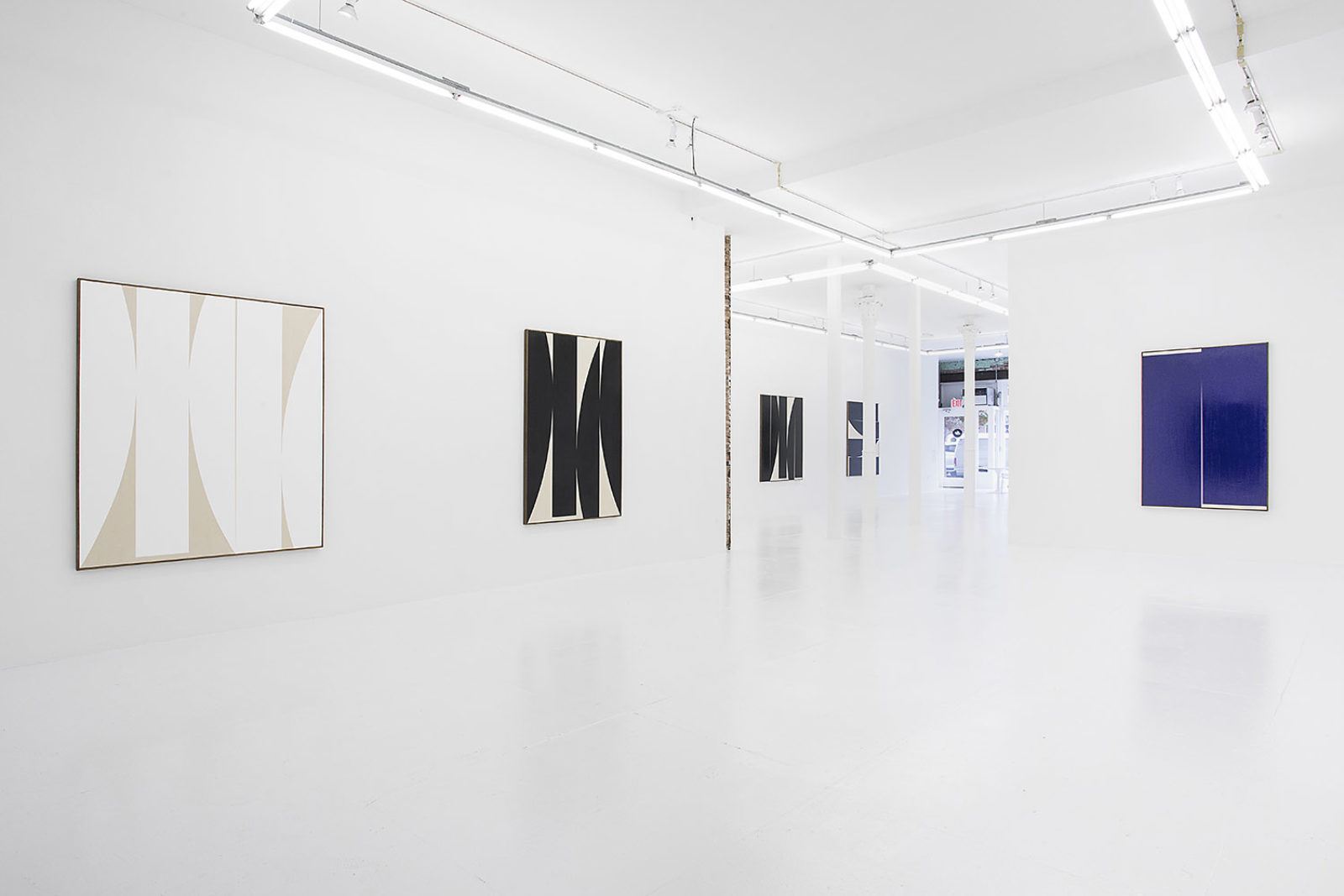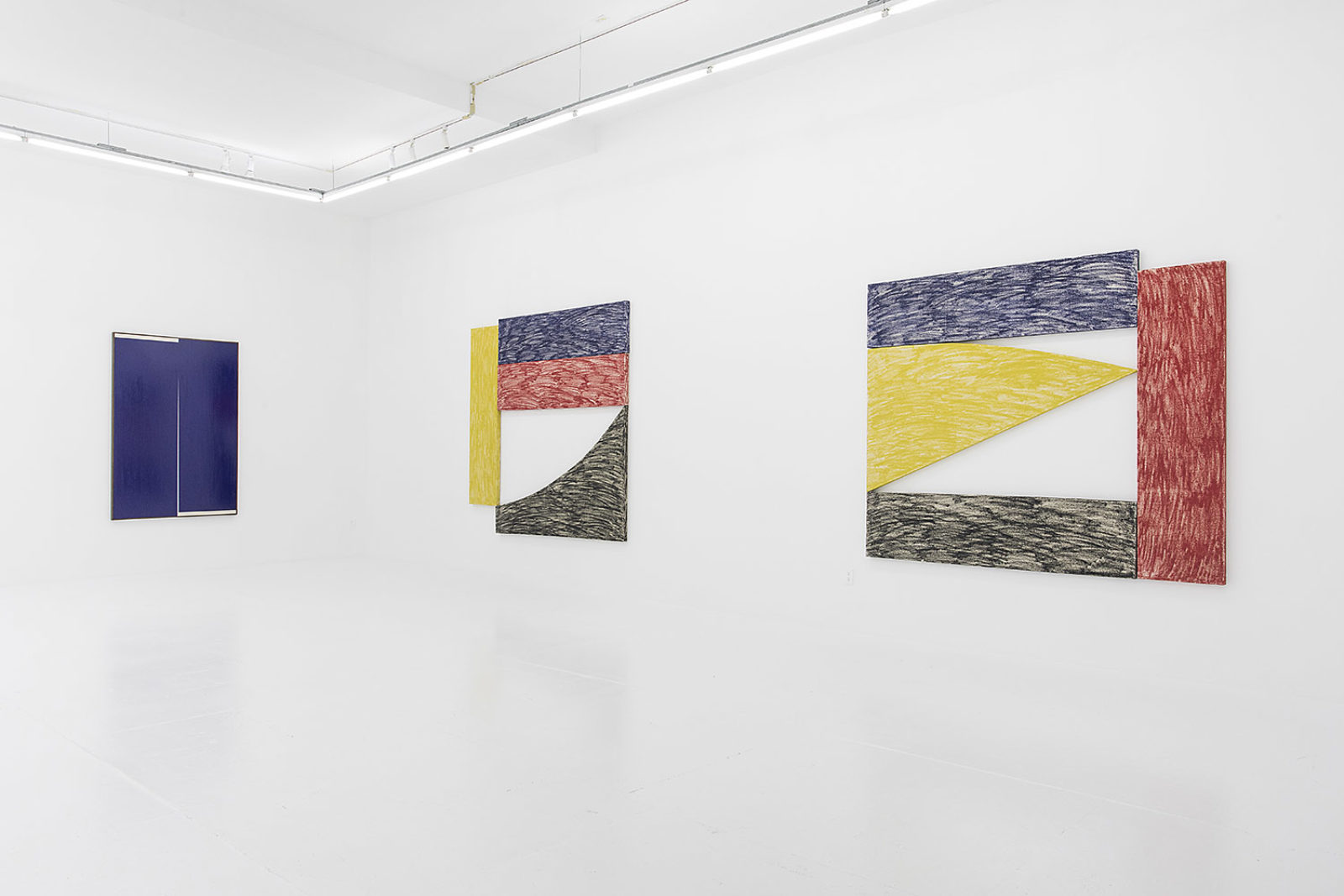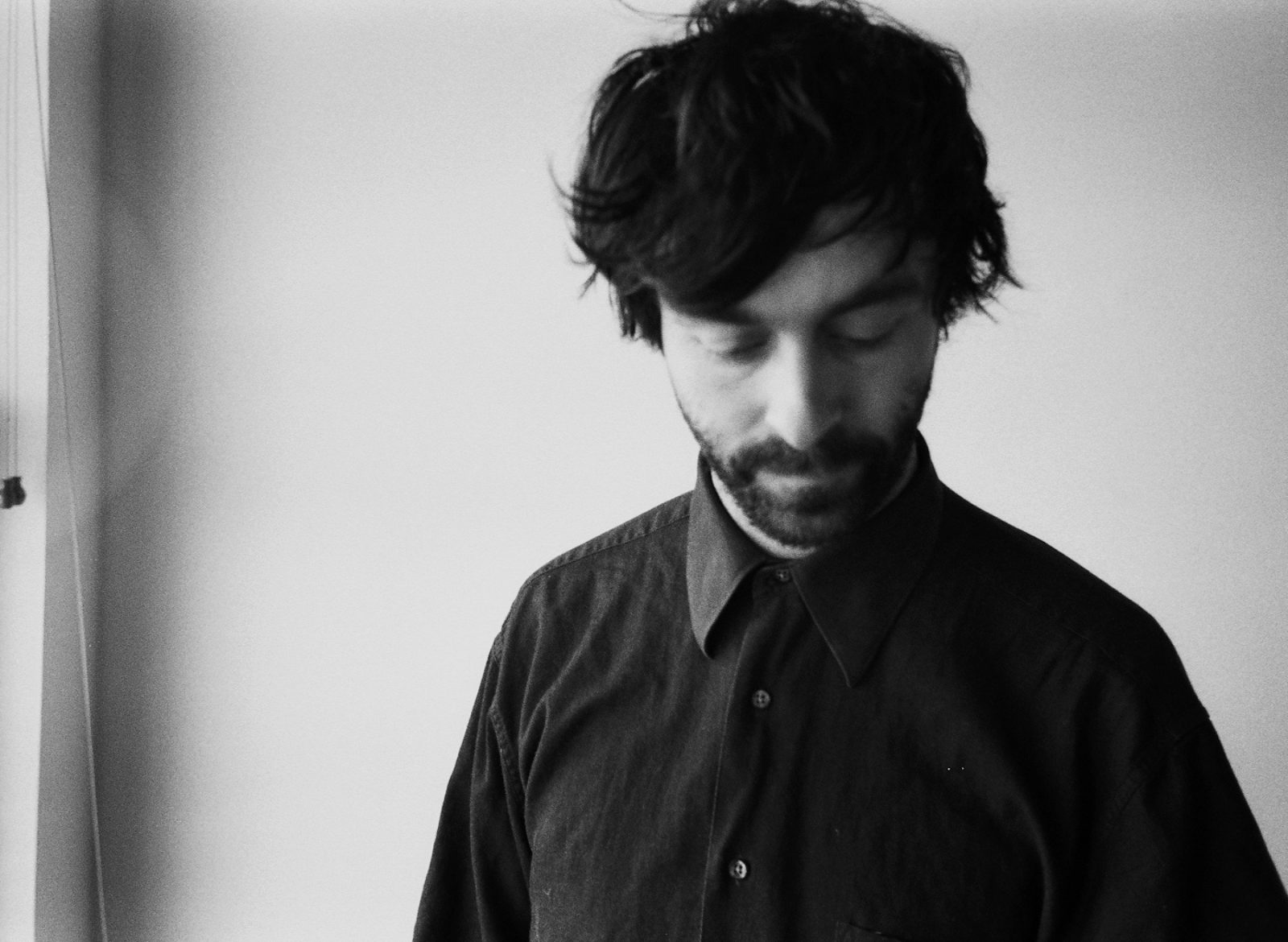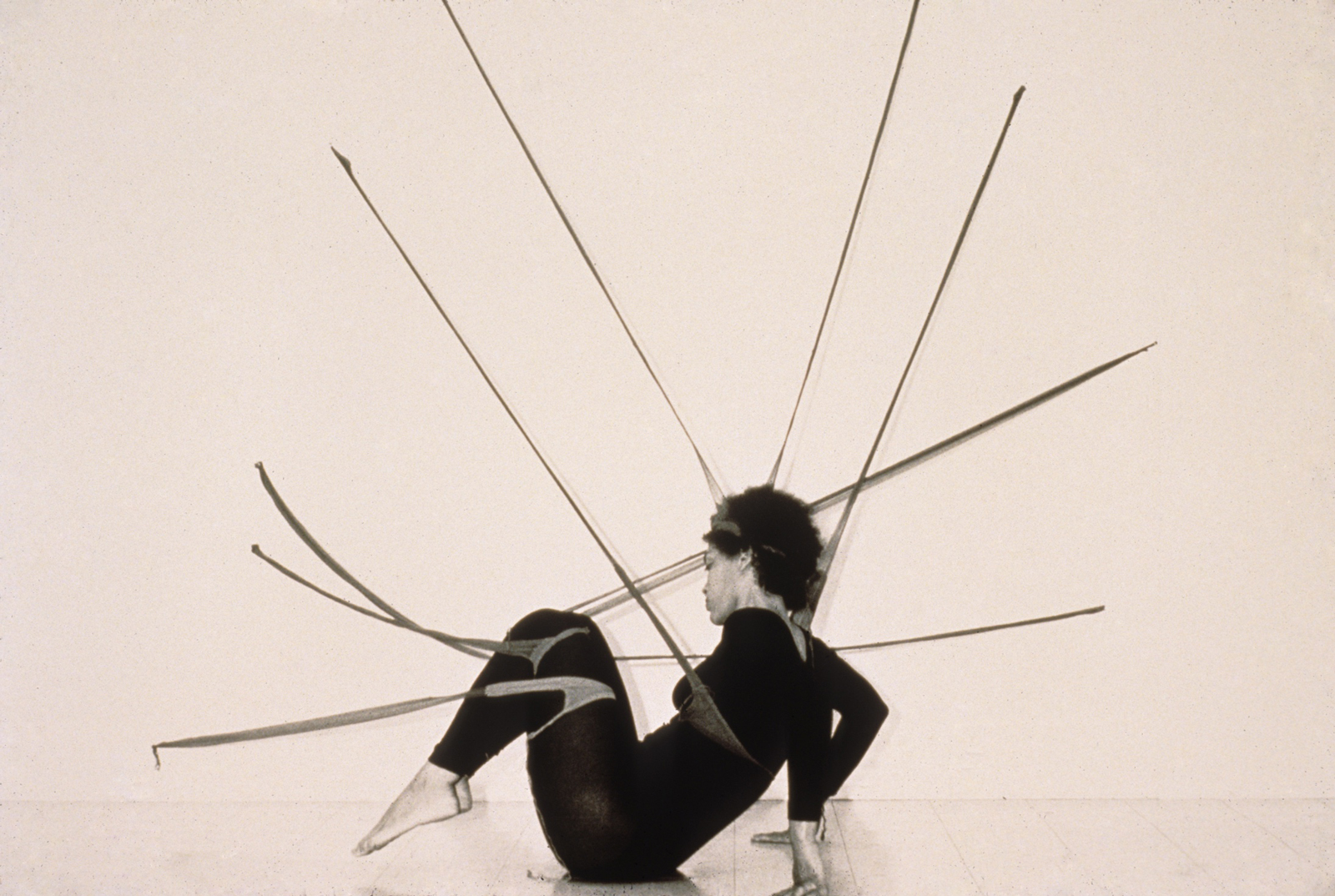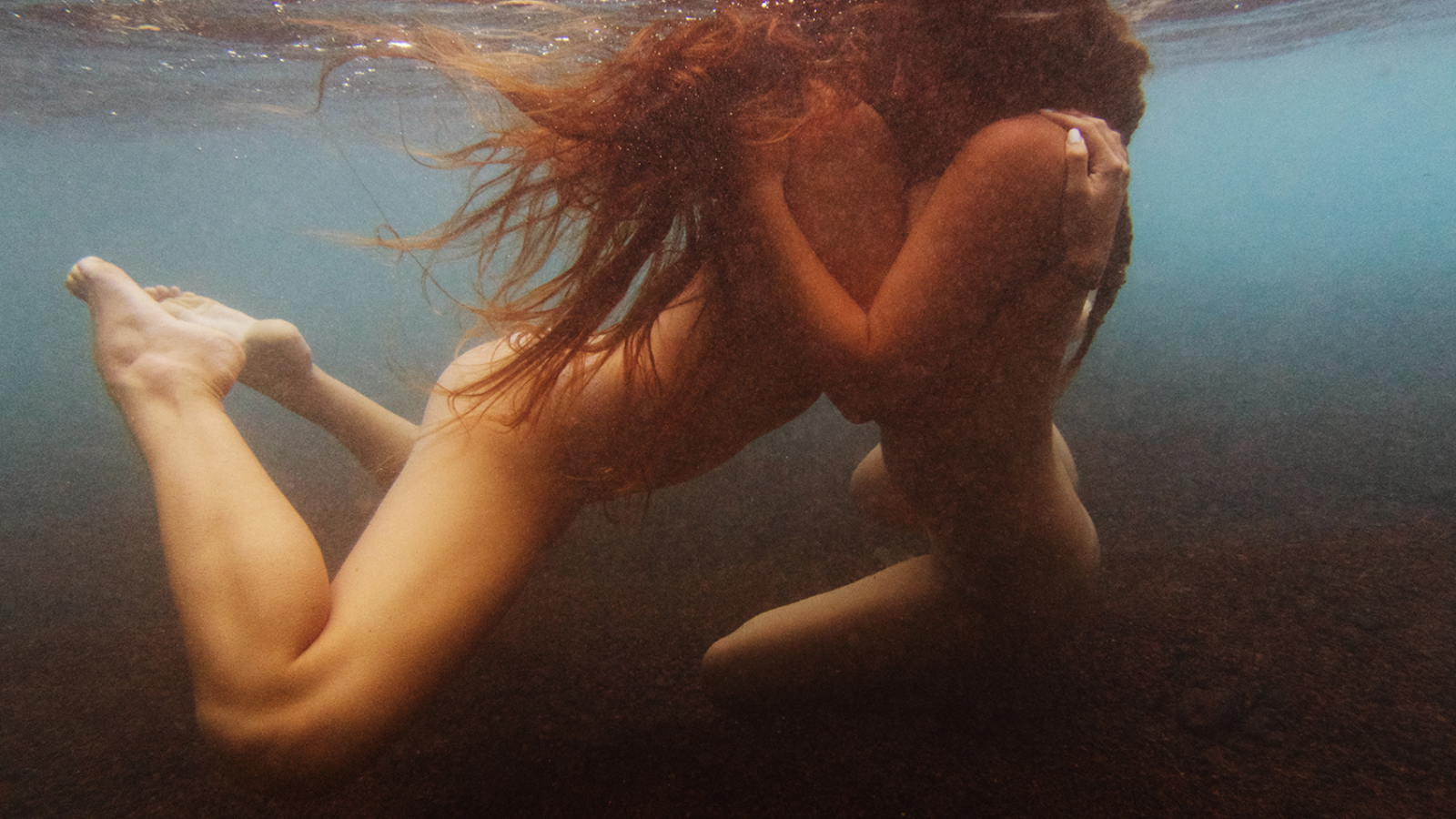Text: Alec Coiro
All Images Courtesy of the Artist and The Hole
How are shapes instilled with meaning? This is not so much an artistic question as the question that began art — and language and religion come to think of it. Johnny Abrahams explores this question from a number of angles in the show that nonetheless remains focused on very specific shapes. He uses what he refers to as the “subtractive strategy” of moiré patterns to create “secondary images” out of the shapes he depicts. He also uses massive shifts in scale to create a sort of alienation effect on our perception of everyday objects, many of which are the result of an extensive industrial design process. He also uses the iteration of his shapes to create a kind meter, a meaning-making process that Abrahams borrows for poetry.
Abrahams is also interested in challenging the line between painting and sculpture, a project which we talk about at length below. He does this no just to challenge for challenging’s sake, but rather to make “the medium do something it usually doesn’t,” again opening up the canvas to new meanings.
The resulting works are on display at the Hole until the very last day of 2017. Consider reading our interview with the artist before checking it out. His commentary is quite illuminating.
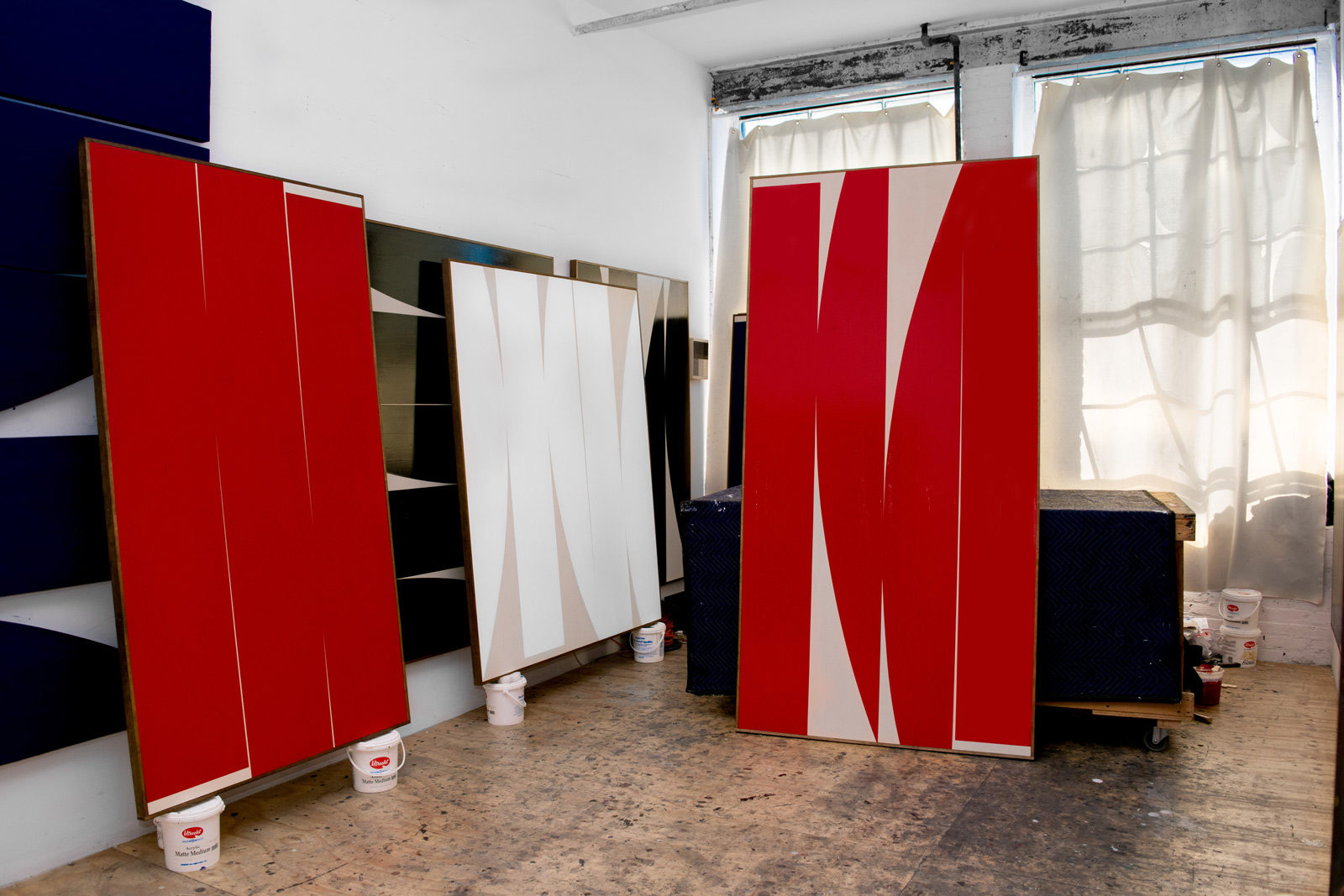
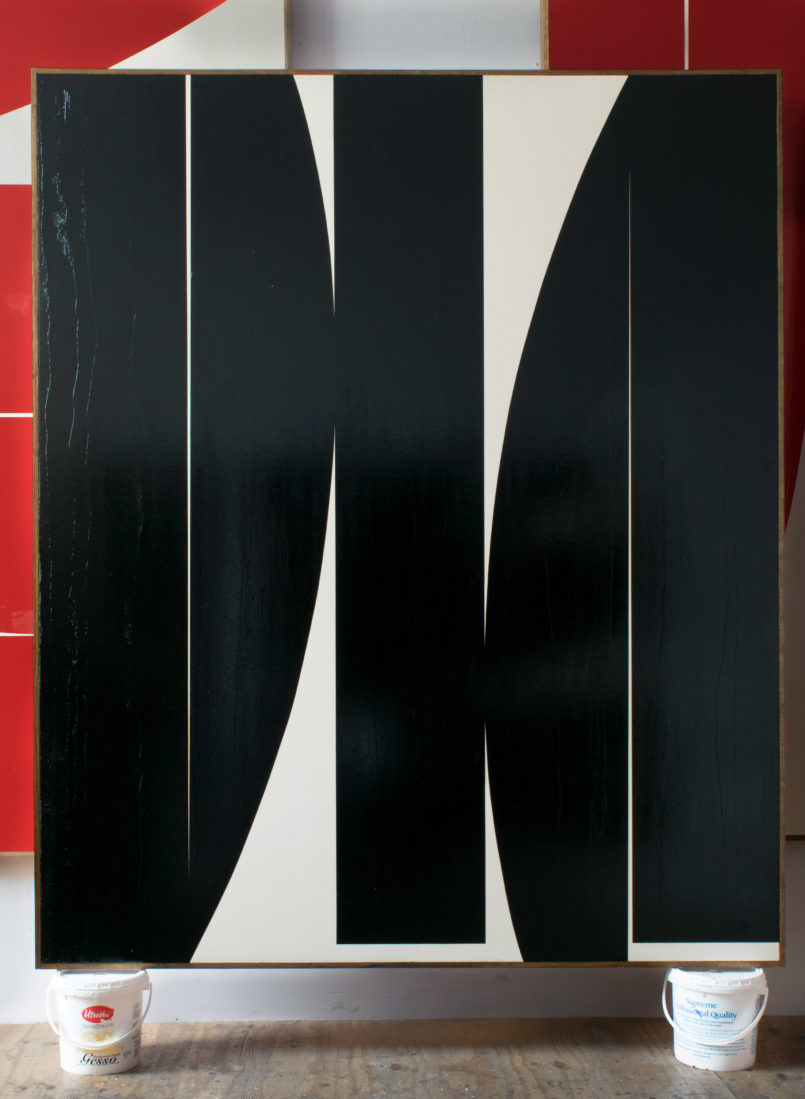
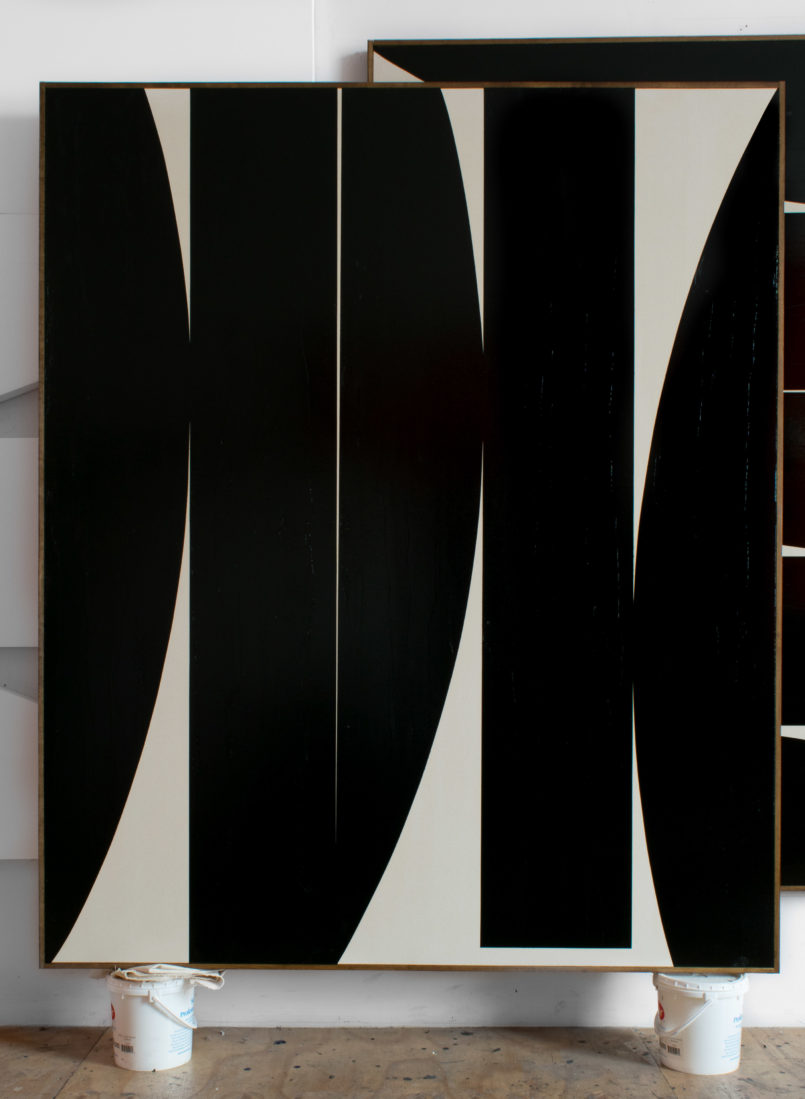
What sparked your interest in moiré patterns and optical effects in general?
My earlier optical works explored what could be done with a line to the exclusion of all other elements. They usually started out with a grid and then pattern-fills within that grid to form increasingly intricate geometries. I was fascinated by their ability to destabilize the fixed gaze and the afterimages of color generated by so many high contrast figure-ground relationships. Subsequently, my interest in moire patterns came from an enthusiasm for textiles, the fiber arts in general, and their role in the technological revolution that led to today’s computers. I was also very pleased with the extreme opposite outcomes of the optical works and the moire works even though both were generated using only the same constituent elements. The optical works employed an additive strategy, continually adding more and more information until the composition is complete, resulting in extremely vibratory and destabilizing visual languages. The moire paintings employed a subtractive strategy and were made by generating a line based pattern that becomes the figure, then subtracting from that figure by overlaying the exact same pattern of lines just out of phase with the original set in the same color as the ground. This subtractive process generated a composition of artifacts and secondary images that had much calmer and harmonious outcomes.
A threnody is a kind of poetical lament. How does such a lament relate to the work you’re showing?
A threnody is a song, hymn or poem of mourning composed as a memorial. I spent last October in a hospital in Tokyo helping a family member through a difficult period of cancer treatment. Every day was spent bedside either watching Japanese baseball or with a set of markers and a ruler I would sketch out compositions for future paintings to pass the time. In fact, most of the compositions in the show were originally drafted in the hospital. They weren’t initially intended to be a memorial or commemorative in any way, but after he passed away their relationship to that time period became undeniable and so I thought I would acknowledge that association within the exhibition’s title.
In your investigation of shapes, you’ve taken inspiration from Kikkoman soy sauce bottles, among other things. Do you have some similar shape inspirations in the new show? Do you set out to discover shapes in the world, or do they find you?
The compositions in the show take their relationships and formal interactions with my earlier line-based paintings. I like to find a compelling moment within an earlier painting and magnify that portion into a large scale composition. When the tiny lines from an earlier work are scaled up and augmented into a 3-meter tall composition they end up reading as sculptural forms. Some of the forms are taken directly from the earlier works, and some are improvised, often times by mining the commercial landscape for examples of iconic household or industrial design objects, then abstracting and repurposing them to fit the compositions. Earlier this year I became fascinated with the Kikkoman Soy Sauce bottle after learning it had taken three years and three hundred prototypes to design. I try to keep an eye out now for similar functionalist objects that because they are neither decorative nor works of art go unnoticed regardless of their aesthetic quality. In addition to the Kikkoman soy sauce bottle I’m very much infatuated with the Head and Shoulders bottle and the red Solo cup right now, both objects that due to their ubiquitousness are taken for granted or overlooked in spite of (and sometimes because of) their elegance and simplicity. The shapes in the painting certainly aren’t meant to represent those objects, but they are influenced by their balance and refinement.
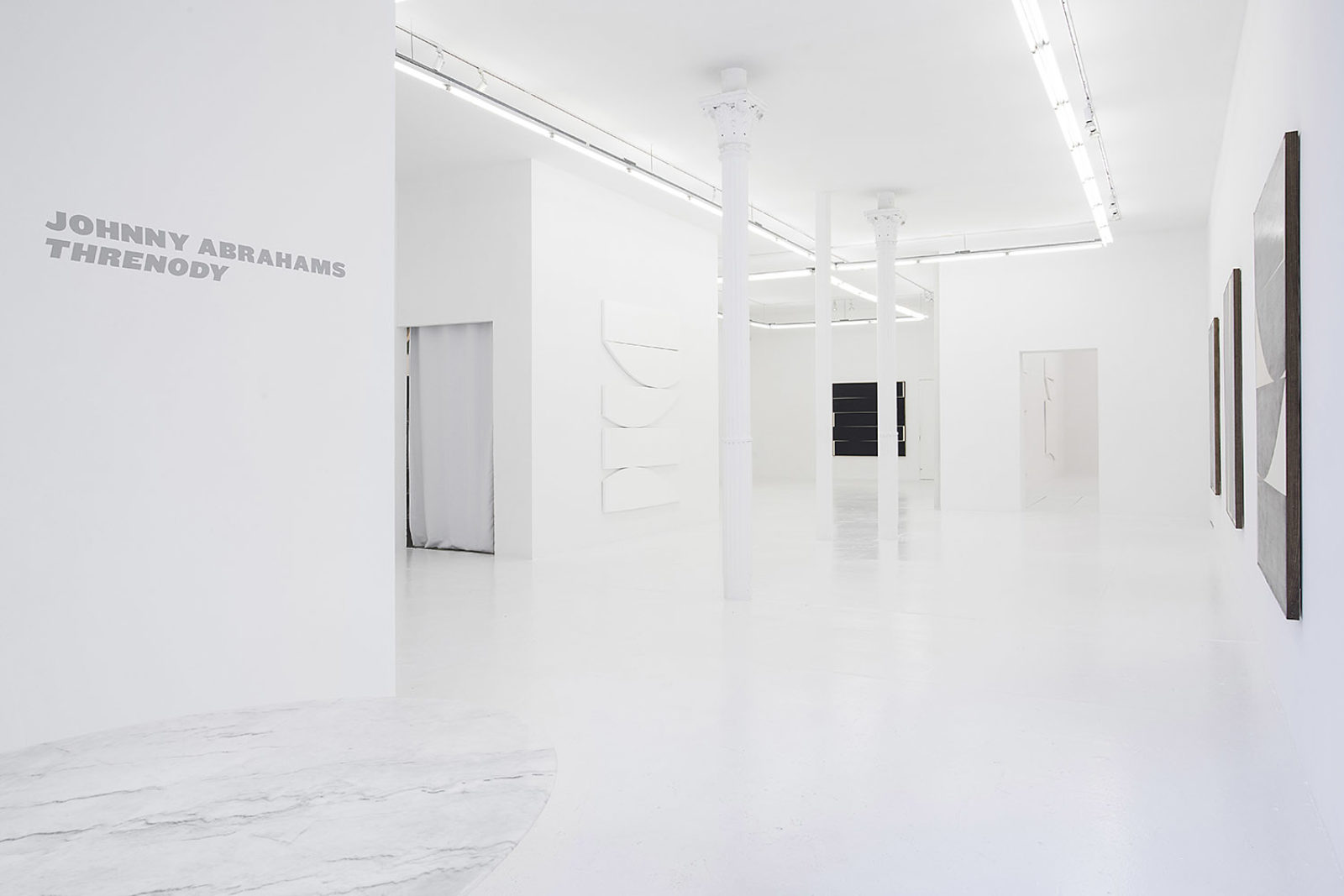
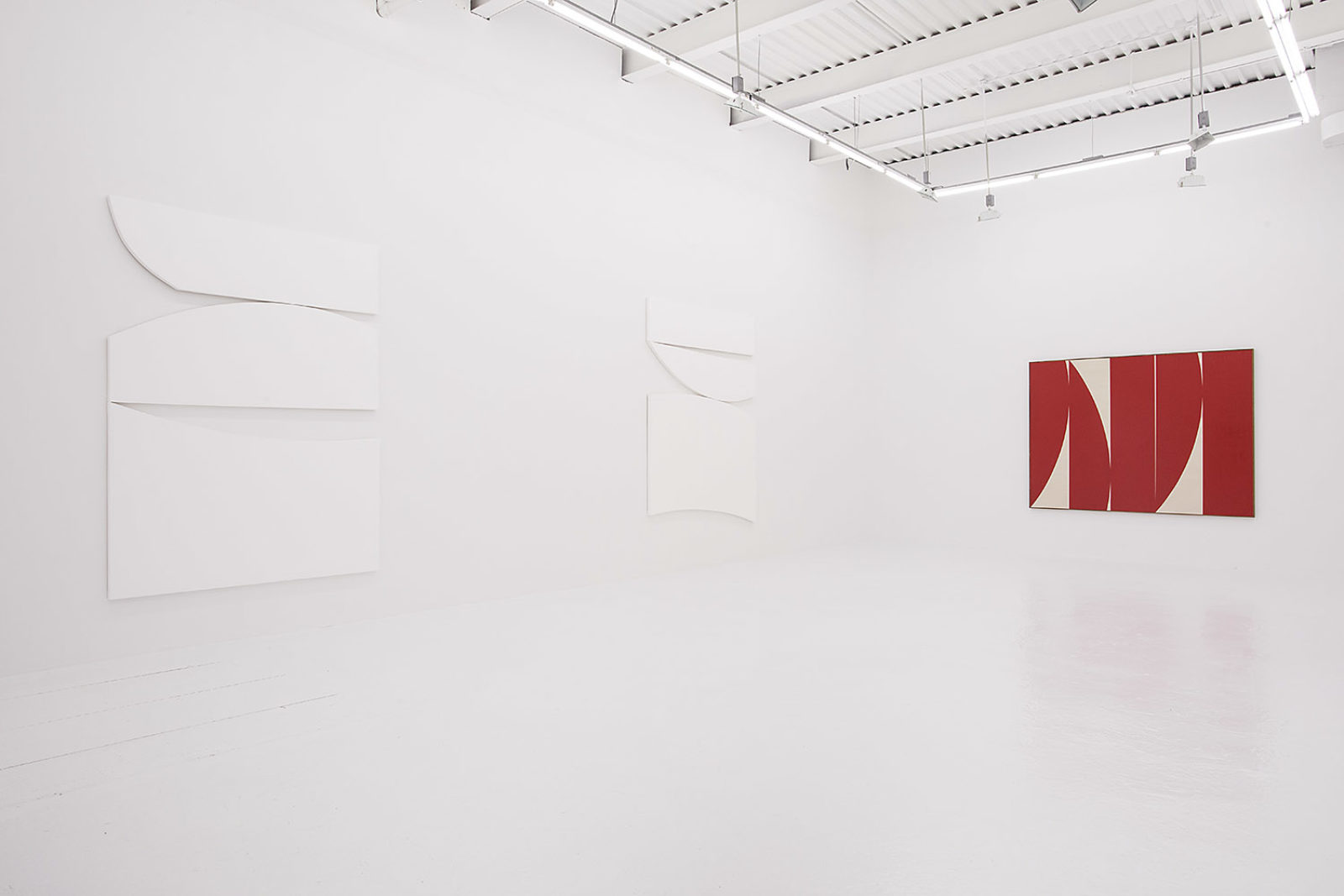
I thought that since I was already making paintings about sculpture I should make sculptures about paintings, so I started building the individual shapes within the paintings as three-dimensional objects and stacking them up the wall in the same relationships found in the painting to bridge the two mediums.
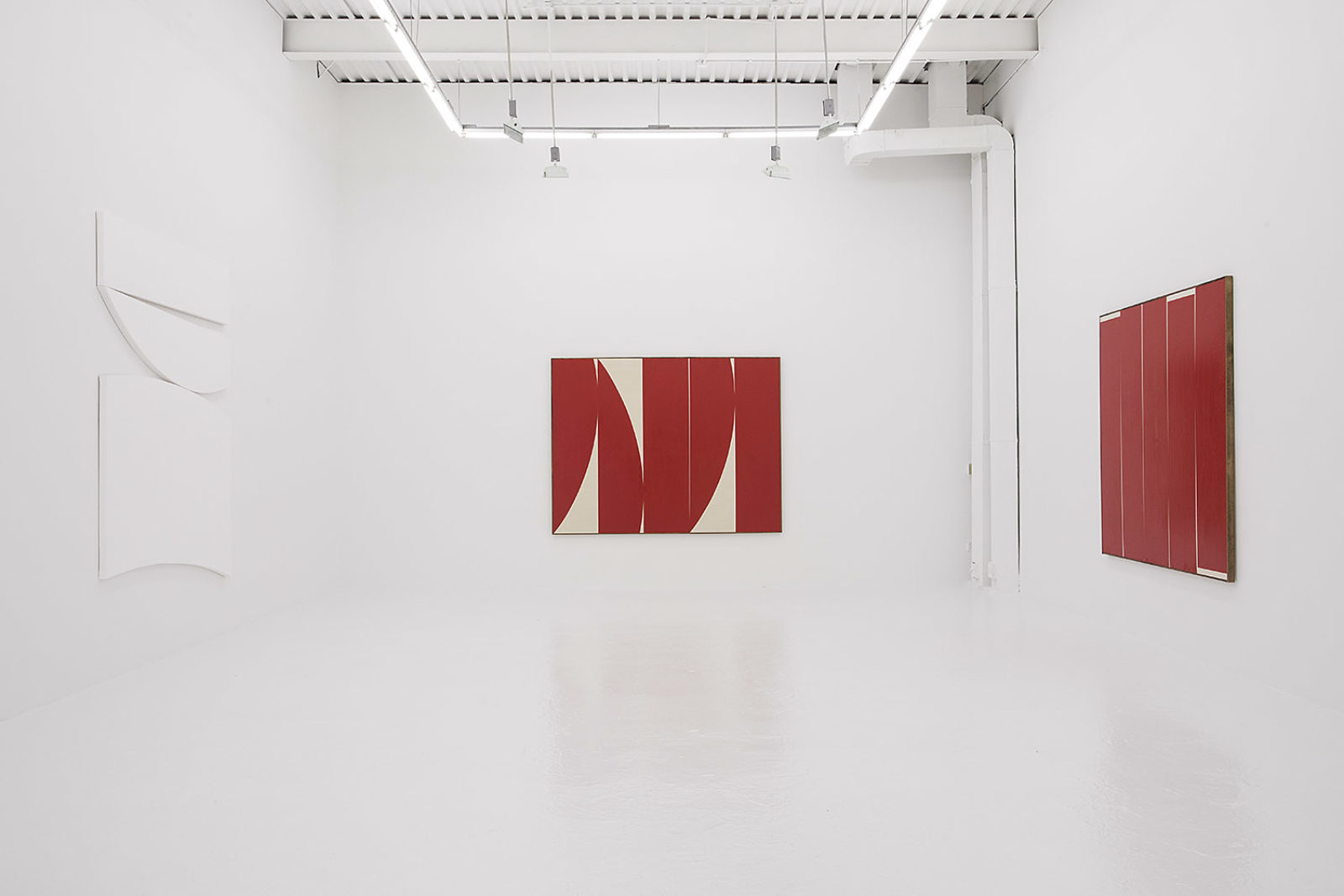
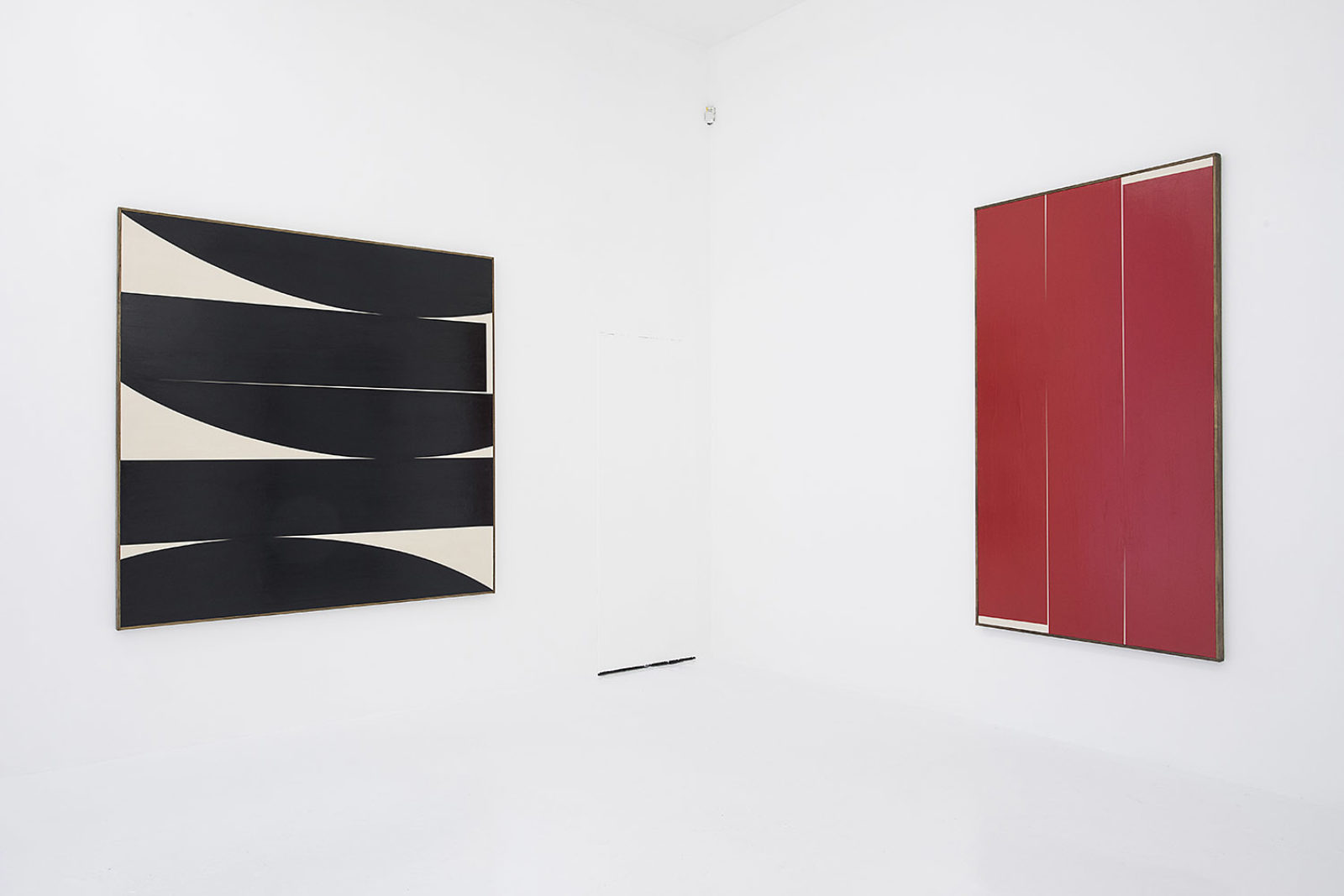
The references in your work imply an expert’s familiarity with art history in general and abstract art history in particular. Given this, can you tell us what — for you — are the important milestones are in the history of abstract art, and how you see your work fitting into that history?
(I think I would have a hard time answering this one in less than 10 pages so I’ll just say how I see my work interacting with the historical dialogue) I see these current object paintings as obviously being very much in dialogue with the minimalists of the 60’s and 70’s. Clearly, there is a great deal of commonality and shared visual language between my works and figures within the minimalist and optical art movements. The idea of these silhouettes of seemingly massive objects described in paint, conveying drama through their subtle interactions with each other has been used by Bridget Riley, Carmen Herrera, Ellsworth Kelly, Richard Serra, Robert Motherwell, Imi Knoebel, Leon Polk Smith, etc., with every artist repurposing the idea to fit their own narrative and no doubt representing something very different to all who use it. In some cases, the interaction is made lighthearted by the use of primary colors, or in others emboldened by high contrast figure-ground relationships. In the case of my own work, I think that through the repetition of the forms and their interactions it becomes less about the brutality of a single interaction and more about rhythm and structure, theme and variation. Repeating the forms and their interactions put them into dialogue with the structure of poetry to me, with each object representing the lines that form stanzas and stanzas defined by the pattern and placement of lines. Again they aren’t meant to represent that concept literally but it is an association that comes to mind when I’m working. While I feel that I am operating within an established theme used by many different artists, each successive artist that employs the shared visual language interprets and conveys it in their own way to represent whatever fiction or truth they want, while hopefully finding a way to define it as uniquely their own.
What got you interested in exploring the tension/boundary between painting and sculpture?
Just around the time that I started making these object paintings, I happened to see an interview of Brian Eno discussing an exhibition of his light boxes, which use LED’s to phase through slowly changing combinations of color and shape. In reference to these works and his ambient musical compositions, he had described his intention to make paintings that moved and music that stands still. That idea resonated with me very much: either restraining an expressive medium or removing the restraints from a rigidly defined one, in both cases making the medium do something it usually doesn’t. In relationship to my paintings, I already felt that through the smooth edge and lack of blending that the paint as a medium was being extremely restrained, almost to the point of being incidental, making the works feel more related to sculpture than painting. I thought that since I was already making paintings about sculpture I should make sculptures about paintings, so I started building the individual shapes within the paintings as three-dimensional objects and stacking them up the wall in the same relationships found in the painting to bridge the two mediums.
